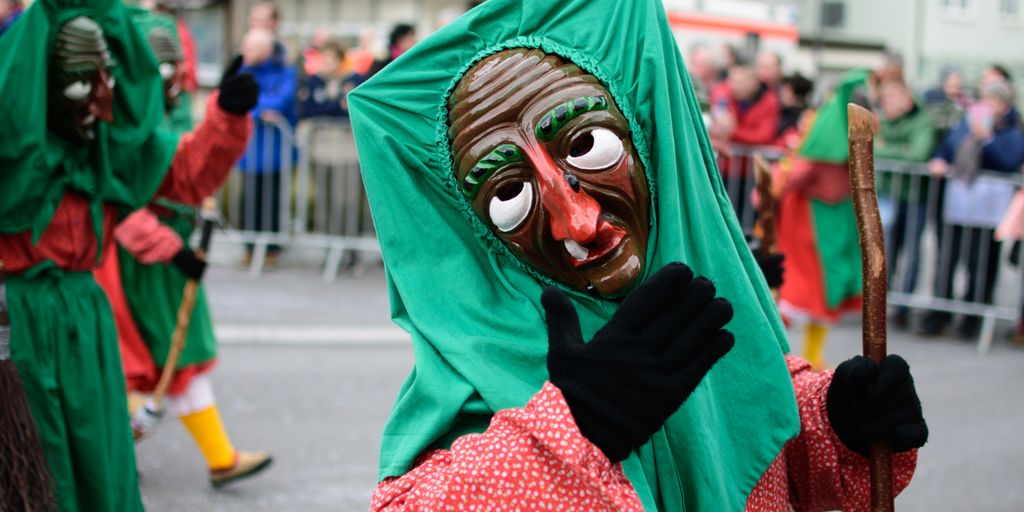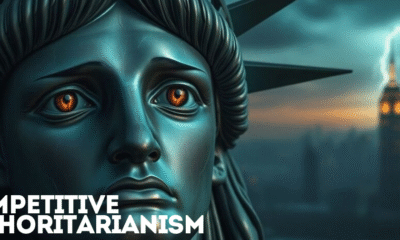Destinations
Brazil’s Best Festivals: Carnival and Beyond

Brazil is famous for its lively festivals that go beyond just Carnival. From colourful parades to traditional dances, these events showcase the rich culture and spirit of the country. Each festival has its own unique charm, making Brazil a vibrant place to celebrate throughout the year.
Key Takeaways
- Carnival is the most famous festival in Brazil, known for its massive parades and lively music.
- The Parintins Folklore Festival features the exciting story of Boi-Bumbá, celebrating local legends.
- Blumenau’s Oktoberfest combines German traditions with Brazilian culture, offering delicious food and drinks.
- Festa Junina in June is a joyful celebration with traditional dances and tasty treats.
- The Círio de Nazaré is a significant religious festival in Brazil, marked by a grand procession and local customs.
The Vibrant Spirit of Brazil’s Carnival

History and Origins of Carnival
Carnival in Brazil has a rich history that dates back to the 18th century. It began as a European tradition, but over time, it evolved into a unique celebration that reflects Brazil’s diverse culture. The festival is a mix of African, Indigenous, and European influences, making it a true representation of Brazilian identity.
Iconic Carnival Parades in Rio
The Rio Carnival is famous for its spectacular parades. Each year, samba schools compete in a grand display of music, dance, and elaborate costumes. The blend of traditional samba with contemporary performances creates a vibrant tapestry of Brazilian culture that is truly unique to the Rio Carnival. Here are some key features of the parades:
- Samba Schools: Each school has its own theme and story.
- Costumes: Dancers wear colourful and intricate outfits.
- Music: Samba music fills the air, energising the crowd.
Carnival’s Cultural Impact
Carnival is not just a festival; it has a significant cultural impact on Brazil. It promotes unity and joy among people from different backgrounds. The festival also boosts tourism, attracting millions of visitors each year.
Carnival is a time when the spirit of Brazil shines brightly, showcasing the country’s love for music, dance, and celebration.
Overall, Carnival is a vibrant expression of Brazilian culture that brings people together in a joyful celebration of life.
Exploring the Parintins Folklore Festival
The Legend of Boi-Bumbá
The Parintins Folklore Festival is famous for its Boi-Bumbá legend, which tells the story of a magical ox. This tale is celebrated through vibrant performances and colourful costumes. The festival showcases two main teams, the Garantido (red) and the Caprichoso (blue), who compete to tell the best version of the story. Each team has its own unique style, music, and dance, making the festival a spectacular event.
Parintins: A Celebration of Colour and Music
During the festival, the streets of Parintins come alive with music and dance. Thousands of people gather to enjoy the lively atmosphere. Here are some highlights of the festival:
- Parades featuring elaborate floats and costumes.
- Live music performances from local artists.
- Traditional dances that reflect the culture of the Amazon.
Cultural Significance of Parintins
The Parintins Folklore Festival is not just a fun event; it holds deep cultural meaning. It brings together the community and helps to preserve local traditions.
The festival is a time for people to come together, celebrate their heritage, and share their stories. It is a unique experience that showcases the rich culture of the Amazon region.
Overall, the Parintins Folklore Festival is a vibrant celebration that highlights the importance of folklore in Brazilian culture. It is a must-see event for anyone wanting to experience the heart and soul of Brazil.
Oktoberfest in Blumenau: A German-Brazilian Fusion
The Origins of Oktoberfest in Brazil
Oktoberfest in Blumenau is the largest German festival in the Americas. It started in 1984 and has grown into a major event that attracts thousands of visitors each year. This festival celebrates German culture every October with traditional beer, food, and dance.
Traditional German Brews and Cuisine
At the festival, you can enjoy a variety of delicious German foods and drinks, including:
- Sausages: A must-try, with many different types available.
- Pretzels: Soft and salty, perfect with beer.
- German Beer: Brewed locally, offering a taste of Germany right in Brazil.
Cultural Performances and Activities
The festival is not just about food and drink; it also features many cultural activities:
- Traditional Music: Bands play folk music that gets everyone dancing.
- Dance Shows: Performers showcase traditional German dances.
- Parades: Colourful parades celebrate the festival’s spirit.
Oktoberfest in Blumenau is a wonderful blend of cultures, bringing together the best of German traditions and Brazilian hospitality.
This festival is a great way to experience the rich culture of Germany while enjoying the warm atmosphere of Brazil. Don’t miss out on this unique celebration!
Festa Junina: Brazil’s June Festival

Traditional Festivities and Customs
Festa Junina is a lively celebration that takes place in June across Brazil. It marks the harvest season and is filled with colourful decorations and joyful activities. People dress in traditional outfits, often resembling rural farmers, and participate in various games and dances. Here are some key elements of the festival:
- Bonfires: Central to the celebrations, bonfires are lit to symbolise warmth and community.
- Traditional Music: The sound of forró music fills the air, encouraging everyone to dance.
- Costumes: Participants wear vibrant clothing, often with chequered patterns, to embrace the festive spirit.
The Role of Quadrilha Dance
One of the highlights of Festa Junina is the Quadrilha dance. This traditional dance involves:
- Group Participation: Dancers form pairs and perform choreographed steps.
- Storytelling: The dance often tells a story, reflecting rural life and customs.
- Costumes: Dancers wear elaborate outfits, adding to the visual spectacle.
Culinary Delights of Festa Junina
Food plays a significant role in Festa Junina, with many delicious treats to enjoy. Some popular dishes include:
- Pamonha: A sweet corn dish wrapped in corn husks.
- Canjica: A creamy dessert made from corn, milk, and sugar.
- Quentão: A warm drink made from ginger, sugar, and cachaça.
Festa Junina is not just a festival; it’s a time for families and friends to come together, celebrate, and create lasting memories. The joy of the festival is felt in every corner of Brazil.
The Magic of Natal Luz in Gramado
Christmas Celebrations in Brazil
Natal Luz, or the Christmas Light Festival, is a spectacular event held in Gramado, Brazil. This festival transforms the city into a winter wonderland, filled with lights, decorations, and festive cheer. Every year, thousands of visitors come to experience the magic of Christmas in this charming town.
The Enchanting Light Shows
The highlight of Natal Luz is undoubtedly the stunning light shows. These shows feature:
- Illuminated displays that cover the streets and buildings.
- Musical performances that accompany the light displays.
- Fireworks that light up the night sky, creating a magical atmosphere.
Family-Friendly Activities and Events
Natal Luz offers a variety of activities suitable for all ages, including:
- Parades featuring Santa Claus and other festive characters.
- Workshops where children can create their own Christmas crafts.
- Themed markets selling local crafts and delicious treats.
The festival is not just about lights; it’s a time for families to come together and celebrate the joy of the season.
Overall, Natal Luz in Gramado is a unique celebration that captures the spirit of Christmas, making it a must-visit for anyone looking to experience the festive season in Brazil. The combination of cultural events and breathtaking decorations creates an unforgettable experience for all who attend.
Recife’s Passionate Frevo Festival
The History of Frevo Music and Dance
Frevo is a lively dance and music style that originated in Recife, Pernambuco. It has roots in the carnival celebrations of the late 19th century. The dance is known for its energetic movements and vibrant music, which often includes brass instruments and percussion. Frevo has become a symbol of Pernambuco’s culture and is celebrated during the Frevo Festival.
Key Events During the Frevo Festival
The Frevo Festival is packed with exciting events that showcase this unique dance. Here are some highlights:
- Parades featuring dancers in colourful costumes.
- Workshops where people can learn the steps of Frevo.
- Concerts with live music from local bands.
Frevo’s Influence on Brazilian Culture
Frevo is not just a dance; it has a significant impact on Brazilian culture. It promotes community spirit and brings people together. The festival attracts visitors from all over, making it a key event in Recife’s calendar. Frevo’s rhythms can be heard in many other Brazilian music styles, showing its lasting influence.
The Frevo Festival is a celebration of life, colour, and the joy of dance, reflecting the heart of Recife’s vibrant culture.
Bahia’s Lavagem do Bonfim

The Rituals of Lavagem do Bonfim
The Lavagem do Bonfim is a vibrant festival held annually in Salvador, Bahia. This event is a unique blend of religious devotion and cultural celebration. Participants dress in white and carry flowers to the Bonfim Church, where they wash the steps in a symbolic act of purification. This ritual is not just about cleaning; it represents a deep connection to faith and community.
Cultural and Religious Significance
The festival has roots in Afro-Brazilian traditions and Catholicism. It honours Our Lord of Bonfim, a figure of great importance in the local culture. The event attracts thousands of people, showcasing the rich heritage of Bahia. Here are some key aspects of its significance:
- Unity: Brings together people from various backgrounds.
- Faith: Strengthens the bond between the community and their beliefs.
- Tradition: Preserves the unique customs of Bahia.
Music and Dance in the Streets
During the Lavagem do Bonfim, the streets come alive with music and dance. Traditional rhythms fill the air, and everyone is encouraged to join in. The atmosphere is festive, with:
- Live performances from local musicians.
- Dancers showcasing traditional moves.
- Food stalls offering delicious local cuisine.
The Lavagem do Bonfim is more than just a festival; it is a celebration of life, faith, and community spirit.
This festival is a true reflexion of Bahia’s vibrant culture, where tradition and modernity coexist beautifully.
Highlights of the Festival:
- Date: Annually in January
- Location: Salvador, Bahia
- Participants: Thousands of locals and tourists alike
Join in the festivities and experience the magic of Lavagem do Bonfim!
The Colourful Festa do Divino Espírito Santo
Historical Roots of the Festival
The Festa do Divino Espírito Santo, or the Festival of the Divine Holy Spirit, has deep historical roots in Brazil. It began in the 13th century in Portugal and was brought to Brazil by the Portuguese settlers. This festival celebrates the Holy Spirit and is marked by vibrant traditions and community spirit.
Religious Ceremonies and Traditions
During the festival, various religious ceremonies take place, including:
- Processions: Participants carry the Holy Spirit banner through the streets.
- Masses: Special church services are held to honour the Holy Spirit.
- Offerings: People bring food and flowers as offerings to the altar.
Community Involvement and Celebrations
The festival is a time for community bonding and joy. Activities include:
- Traditional music and dance: Local bands play lively music, and people dance in the streets.
- Food stalls: Delicious local dishes are served, bringing everyone together.
- Decorations: Streets are adorned with colourful banners and flowers, creating a festive atmosphere.
The Festa do Divino Espírito Santo is not just a religious event; it is a celebration of community, culture, and joy.
This festival showcases the rich cultural heritage of Brazil, where people come together to celebrate and honour their traditions. The community spirit shines through every aspect of the festival, making it a truly unique experience.
Brazil’s Unique Festival of Yemanjá

Honouring the Goddess of the Sea
The Festival of Yemanjá is a vibrant celebration dedicated to the Goddess of the Sea. This festival takes place every year on February 2nd, primarily in Salvador, Bahia. People gather at the beach to pay tribute to Yemanjá, offering her gifts such as flowers, perfumes, and food. The atmosphere is filled with joy and spirituality as participants sing and dance in her honour.
Traditional Offerings and Rituals
During the festival, many rituals are performed to show respect to Yemanjá. Here are some common offerings:
- Flowers: Beautiful white flowers are often placed in the sea.
- Food: Traditional dishes are prepared and offered.
- Perfumes: Many people bring perfumes as a sign of love and respect.
These offerings are believed to bring blessings and protection from the goddess.
Cultural Importance of Yemanjá Festival
The Yemanjá Festival is not just a religious event; it also plays a significant role in Brazilian culture. It brings together people from different backgrounds, fostering a sense of community. The festival showcases:
- Music and Dance: Traditional music fills the air, and dancers perform lively routines.
- Art and Craft: Local artisans display their work, celebrating Brazilian creativity.
- Unity: The festival promotes harmony among participants, regardless of their beliefs.
The Festival of Yemanjá is a beautiful blend of tradition and celebration, highlighting the rich cultural heritage of Brazil.
Overall, the Festival of Yemanjá is a unique event that reflects the deep connection between Brazilians and their cultural roots, making it a must-see for anyone visiting the country.
The Enchanting Festival of Círio de Nazaré
The Procession of Círio de Nazaré
The Círio de Nazaré is one of Brazil’s most important religious events, held annually in Belém, Pará. This grand procession attracts millions of devotees who come to pay homage to Our Lady of Nazaré. The event features a stunning parade where a statue of the Virgin Mary is carried through the streets, accompanied by music, prayers, and vibrant decorations.
Religious and Cultural Significance
The festival is not just a religious event; it also holds deep cultural importance for the people of Pará. It showcases the region’s rich traditions and community spirit. Here are some key aspects of its significance:
- Unity: The festival brings together people from all walks of life.
- Tradition: It preserves local customs and beliefs.
- Faith: It strengthens the spiritual connection among participants.
Festive Atmosphere and Local Traditions
During the Círio de Nazaré, the atmosphere is filled with joy and devotion. The streets are adorned with colourful decorations, and the air is filled with the sounds of music and laughter. Many locals prepare traditional foods to share with visitors, creating a sense of community.
The Círio de Nazaré is a time when faith and culture blend beautifully, creating a unique experience for everyone involved.
In summary, the Círio de Nazaré is a vibrant celebration that highlights the spiritual and cultural richness of Brazil, making it a must-see event for anyone interested in the country’s traditions.
Celebrating São João in the Northeast
The Festive Traditions of São João
São João is a lively festival celebrated in the Northeast of Brazil, marking the arrival of the harvest season. This festival is filled with joy and excitement, bringing communities together to celebrate with various traditions. People dress in colourful outfits, often resembling rural characters, and participate in lively street parties.
Music and Dance at São João
Music and dance are at the heart of São João celebrations. Traditional forró music fills the air, and everyone joins in the fun. Here are some key elements of the music and dance:
- Forró: A popular dance style that gets everyone moving.
- Quadrilha: A group dance that tells a story, often performed in pairs.
- Live Bands: Local musicians play throughout the night, creating a festive atmosphere.
Culinary Highlights of the Festival
Food plays a significant role in São João. The festival features a variety of delicious dishes, including:
- Pamonha: A sweet corn dish wrapped in corn husks.
- Canjica: A creamy dessert made from corn, milk, and sugar.
- Bolo de Milho: A traditional corn cake enjoyed by many.
The São João festival is not just about the food and music; it’s a time for families and friends to come together and celebrate their culture.
In June, events like forróçacana at local venues, such as the Black Cat, commemorate the harvest festival of Festa Junina, also known as a Festa de São João. This festival truly showcases the vibrant spirit of Brazilian culture, making it a must-see for anyone visiting the Northeast.
In Summary
In conclusion, Brazil is a country full of vibrant festivals that showcase its rich culture and traditions. While Carnival is the most famous, there are many other celebrations that are just as exciting. From the lively music and dance of Festa Junina to the colourful parades of Parintins Folklore Festival, each event offers a unique experience. These festivals bring people together, allowing them to celebrate their heritage and enjoy the joy of life. Whether you are a local or a visitor, joining in on these festivities is a wonderful way to understand and appreciate Brazil’s diverse culture.
Frequently Asked Questions
What is the history behind Brazil’s Carnival?
Brazil’s Carnival has a long history, starting from European traditions in the 18th century. It has grown to become a huge celebration with parades, music, and dancing.
When does Carnival take place in Brazil?
Carnival usually happens in February or March, just before Lent. The dates change each year, so it’s good to check ahead.
What is the Parintins Folklore Festival?
The Parintins Folklore Festival is an exciting event in the Amazon, celebrating the story of Boi-Bumbá with music, dance, and colourful costumes.
How is Oktoberfest in Blumenau different from the original?
Oktoberfest in Blumenau has a Brazilian twist. While it keeps the German beer and food, it also includes local music and culture, making it unique.
What do people do during Festa Junina?
Festa Junina is a June festival where people dress up, dance the quadrilha, and enjoy traditional foods like sweet corn and cakes.
What is Natal Luz in Gramado?
Natal Luz is a Christmas festival in Gramado, famous for its beautiful light displays, parades, and family-friendly activities.
What happens at the Lavagem do Bonfim?
The Lavagem do Bonfim is a religious event in Bahia where people clean the Bonfim Church. It includes music, dancing, and a lot of joy.
Why is the Yemanjá Festival important?
The Yemanjá Festival honours the sea goddess. People make offerings and celebrate her with songs and rituals, showing respect for their culture.
-

 Stock Market6 days ago
Stock Market6 days agoUS Stocks Soar as Court Blocks Trump Tariffs and Nvidia Delivers Strong Earnings
-

 Government6 days ago
Government6 days agoCongress Passes Continuing Resolution, Averting Government Shutdown
-

 Press Release5 days ago
Press Release5 days agoCV5 Capital Announces Standout Performance of Cryptanium Fund I SP, Beating Industry Benchmarks
-

 Government6 days ago
Government6 days agoExperts Warn of U.S. Slide Towards Authoritarianism Under Trump Administration
-

 Alternative Energy6 days ago
Alternative Energy6 days agoShalom Lamm on Rising Rent and the Future of Housing
-

 Business2 days ago
Business2 days agoS&P 500 Soars in Best May in Decades Amid Tariff Relief and Nvidia’s Surge
-

 Healthcare4 days ago
Healthcare4 days agoAttention Economy Arms Race: Reclaim Your Focus in a World Designed to Distract You
-

 Immigration2 days ago
Immigration2 days agoTrump’s Immigration Crackdown: Legal Battles and Policy Shifts










